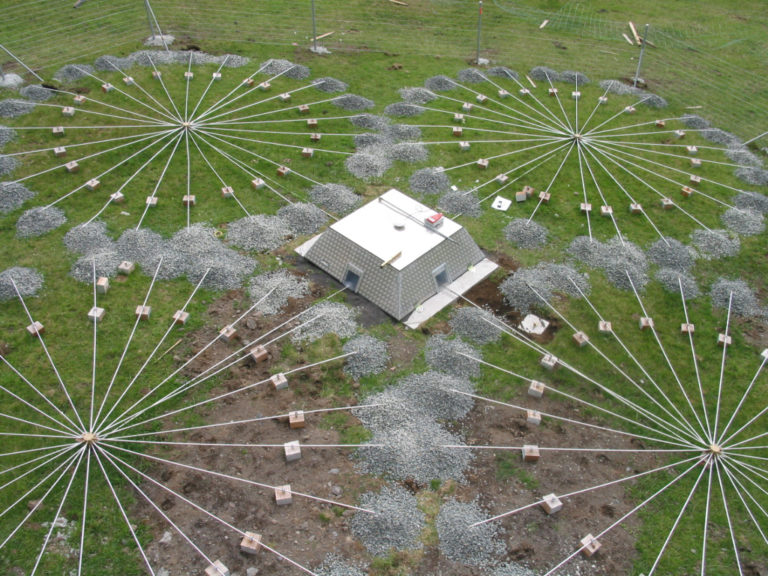Under the Partial Test Ban Treaty (PTBT), all nuclear tests except for those underground are banned. Under the Non-Proliferation Treaty (NPT), only the permanent members of the UN Security Council are legally allowed to possess nuclear weapons. Given the public outcry over fallout that led to the PTBT and the worries over widespread nuclear proliferation that led to the NPT, it’s clear that we require something beyond pinky promises to verify that countries are meeting the terms of these treaties.
But how do we do so? How can you tell when a country tests an atomic bomb? How can you tell who did it? And how can one differentiate a bomb on the surface from a bomb in the atmosphere from a bomb in space from a bomb underwater from a bomb underground?
I’m going to focus on two efforts to monitor nuclear weapons: the national security apparatus of the United States and the Comprehensive Test Ban Treaty Organization (CTBTO) Preparatory Commission’s International Monitoring System (IMS). Monitoring falls into five categories: Atmospheric Radionuclide Monitoring, Seismic Monitoring, Space-based Monitoring, Hydroacoustic Monitoring, and Infrasound Monitoring.
Atmospheric Radionuclide Monitoring
Nuclear explosions generate radionuclides, either by dispersing unreacted fuel, as direct products of fission, or by interactions between neutrons and particles in the air or ground. These radionuclides are widely dispersed from any surface testing, while only a few fission products (mainly various radionuclides of the noble gas xenon) can escape from properly conducted underground tests.
For the purposes of minimizing fallout, underground tests are obviously preferred. But because they only emit small amounts of one particular radionuclide, they are much harder for radionuclide monitoring to detect.
Detecting physical particles is relatively easy. There are 80 IMS stations scattered around the world. Each is equipped with an air intake and a filter. Every day, the filter is changed and then prepared for analysis. Analysis involves waiting a day (for irrelevant radionuclides to decay), then reading decay events from the filter for a further day. This gives scientists an idea of what radioactive elements are present.
Any deviations from the baseline at a certain station can be indicative of a nuclear weapon test, a nuclear accident, or changing wind patterns bringing known radionuclides (e.g. from a commercial reactor) to a station where they normally aren’t present. Wind analysis and cross validation with other methods are used to corroborate any suspicious events.
Half of the IMS stations are set up to do the more difficult xenon monitoring. Here air is pumped through a material with a reasonably high affinity for xenon. Apparently activated charcoal will work, but more sophisticated alternatives are being developed. The material is then induced to release the xenon (with activated charcoal, this is accomplished via heating). This process is repeated several times, with the output of each step pumped to a fresh piece of activated charcoal. Multiple cycles ensure that only relatively pure xenon get through to analysis.
Once xenon is collected, isotope analysis must be done to determine which (if any) radionuclides of xenon are present. This is accomplished either by comparing the beta decay of the captured xenon with its gamma decay, or looking directly at gamma decay with very precise gamma ray measuring devices. Each isotope of xenon has a unique half-life (which affects the frequency with which it omits beta- and gamma-rays) and a unique method of decay (which determines if the decay products are primarily alpha-, beta-, or gamma-rays). Comparing the observed decay events to these “fingerprints” allows for the relative abundance of xenon nuclides to be estimated.
There are some background xenon radionuclides from nuclear reactors and even more from medical isotope production (where we create unstable nuclides in nuclear reactors for use in medical procedures). Looking at global background data you can see the medical isotope production in Ontario, Europe, Argentina, Australia and South Africa. I wonder if this background effect makes world powers cautious about new medical isotope production facilities in countries that are at risk of pursuing nuclear weapons. Could Iran’s planned medical isotope complex have been used to mask nuclear tests?
Not content merely to host several monitoring stations and be party to the data of the whole global network of IMS stations, the United States also has the WC-135 “Constant Phoenix” plane, a Boeing C-135 equipped with mobile versions of particulate and xenon detectors. The two WC-135s can be scrambled anywhere a nuclear explosion is suspected to look for evidence. A WC-135 gave us the first confirmation that the blast from the 2006 North Korean nuclear test was indeed nuclear, several days before the IMS station in Yellowknife, Canada confirmed a spike in radioactive xenon and wind modelling pinpointed the probable location as inside North Korea.
Seismic Monitoring
Given that fewer monitoring stations are equipped with xenon radionuclide detectors and that the background “noise” from isotope production can make radioactive xenon from nuclear tests hard to positively identify, it might seem like nuclear tests are easy to hide underground.
That isn’t the case.
A global network of seismometers ensures that any underground nuclear explosion is promptly detected. These are the same seismometers that organizations like the USGS (United States Geological Survey) use to detect and pinpoint earthquakes. In fact, the USGS provides some of the 120 auxiliary stations that the CTBTO can call on to supplement its fifty seismic monitoring stations.
Seismometers are always on, looking for seismic disturbances. Substantial underground nuclear tests produce shockwaves that are well within the detection limit of modern seismometers. The sub-kiloton North Korean nuclear test in 2006 appears to have been registered as equivalent to a magnitude 4.1 earthquake. A quick survey of ongoing earthquakes should probably show you dozens that have been detected that are less powerful than even that small North Korean test.
This probably leads you to the same question I found myself asking, namely: “if earthquakes are so common and these detectors are so sensitive, how can they ever tell nuclear detonations from earthquakes?”
It turns out that underground nuclear explosions might rattle seismometers like earthquakes do, but they do so with characteristics very different from most earthquakes.
First, the waveform is different. Imagine you’re holding a slinky and a friend is holding the other end. There are two mains ways you can create waves. The first is by shaking it from side to side or up and down. Either way, there’s a perspective from which these waves will look like the letter “s”.
The second type of wave can be made by moving your arm forward and backwards, like you’re throwing and catching a ball. These waves will cause moving regions where the slinky is bunched more tightly together and other regions where it is more loosely packed.
These are analogous to the two main types of body waves in seismology. The first (the s-shaped one) is called an S-wave (although the “S” here stands for “shear” or “secondary” and only indicates the shape by coincidence), while the second is called a P-wave (for “pressure” or “primary”).

Earthquakes normally have a mix of P-waves and S-waves, as well as surface waves created by interference between the two. This is because earthquakes are caused by slipping tectonic plates. This slipping gives some lateral motion to the resulting waves. Nuclear explosions lack this side to side motion. The single, sharp impact from them on the surrounding rocks is equivalent to the wave you’d get if you thrust your arm forward while holding a slinky. It’s almost all P-wave and almost no S-wave. This is very distinctive against a background of earthquakes. The CTBTO is kind enough to show what this difference looks like; in this image, the top event is a nuclear test and the bottom event is an earthquake of a similar magnitude in a similar location (I apologize for making you click through to see the image, but I don’t host copyrighted images here).
There’s one further way that the waves from nuclear explosions stand out. They’re caused by a single point source, rather than kilometers of rock. This means that when many seismic stations work together to find the cause of a particular wave, they’re actually able to pinpoint the source of any explosion, rather than finding a broad front like they would for an earthquake.
The fifty IMS stations automatically provide a continuous stream of data to the CTBTO, which sifts through this data for any events that are overwhelmingly P-Waves and have a point source. Further confirmation then comes from the 120 auxiliary stations, which provide data on request. Various national and university seismometer programs get in on this too (probably because it’s good for public relations and therefore helps to justify their budgets), which is why it’s not uncommon to see several estimates of yield soon after seismographs pick up on nuclear tests.
Space Based Monitoring
This is the only type of monitoring that isn’t done by the CTBTO Preparatory Commission, which means that it is handled by state actors – whose interests necessarily veer more towards intelligence gathering than monitoring treaty obligations per se.
The United States began its space based monitoring program in response to the Limited Test Ban Treaty, which left verification explicitly to the major parties involved. The CTBTO Preparatory Commission was actually formed in response to a different treaty, the Comprehensive Test Ban Treaty, which is not fully in force yet (hence why the organization ensuring compliance with it is called the “Preparatory Commission”).
The United States first fulfilled its verification obligations with the Vela satellites, which were equipped with gamma-ray detectors, x-ray detectors, electromagnetic pulse detectors (which can detect the electro-magnetic pulse from high-altitude nuclear detonations) and an optical sensor called a bhangmeter.
Bhangmeters (the name is a reference to a strain of marijuana, with the implied subtext that you’d have to be high to believe they would work) are composed of a photodiode (a device that produces current when illuminated), a timer, and some filtering components. Bhangmeters are set up to look for the distinctive nuclear “double flash”, caused when the air compressed in a nuclear blast briefly obscuring the central fireball.
The bigger a nuclear explosion, the larger the compression and the longer the central fireball is obscured. The timer picks up on this, estimating nuclear yield from the delay between the initial light and its return.
The bhangmeter works because very few natural (or human) phenomena produce flashes that are as bright or distinctive as nuclear detonations. A properly calibrated bhangmeter will filter out continuous phenomena like lightning (or will find them too faint to detect). Other very bright events, like comets breaking up in the upper atmosphere, only provide a single flash.
There’s only been one possible false positive since the bhangmeters went live in 1967; a double flash was detected in the Southern Indian Ocean, but repeated sorties by the WC-135s detected no radionuclides. The event has never been conclusively proved to be nuclear or non-nuclear in origin and remains one of the great unsolved mysteries of age of widespread atomic testing.
By the time of this (possible) false positive, the bhangmeters had also detected 41 genuine nuclear tests.
The Vela satellites are no longer in service, but the key technology they carried (bhangmeters, x-ray detectors, and EMP detectors) lives on in the US GPS satellite constellation, which does double duty as its space-based nuclear sentinels.
One last note of historical errata: when looking into unexplained gamma-ray readings produced by the Vela satellites, US scientists discovered gamma-ray bursts, an energetic astronomical phenomenon associated with supernovas and merging binary stars.
Hydroacoustic Monitoring
Undersea explosions don’t have a double flash, because steam and turbulence quickly obscure the central fireball and don’t clear until well after the fireball has subsided. It’s true that radionuclide detection should eventually turn up evidence of any undersea nuclear tests, but it’s still useful to have a more immediate detection mechanism. That’s where hydroacoustic monitoring comes in.
There are actually two types of hydroacoustic monitoring. There’s six stations that use true underwater monitoring with triplets of hydrophones (so that signal direction can be determined via triangulation) which are very sensitive, but also very expensive (as hydrophones must be installed at a depth of approximately one kilometer, where sound transmission is best). There’s also five land based stations, which use seismographs on steeply sloped islands to detect the seismic waves underwater sounds make when they hit land. Land based monitoring is less accurate, but requires little in the way of specialized hardware, making it much cheaper.
In either case, data is streamed directly to CTBTO headquarters in Vienna, where it is analyzed and forwarded to states that are party to the CTB. At the CTBTO, the signal is split into different channels based on a known library of undersea sounds and explosions are separated from natural phenomena (like volcanos, tsunamis, and whales) and man-made noises (like gas exploration, commercial shipping, and military drills). Signal processing and analysis – especially of hydrophone data – is a very mature field, so the CTBTO doesn’t lacks for techniques to refine its estimates of events.
Infrasound Monitoring
Infrasound monitoring stations are the last part of the global monitoring system and represent the best way for the CTBTO (rather than national governments with the resources to launch satellites) to detect atmospheric nuclear tests. Infrasound stations try to pick up the very low frequency sound waves created by nuclear explosions – and a host of other things, like volcanos, planes, and mining.
A key consideration with infrasound stations is reducing background noise. For this, being far away from human habitation and blocked from the wind is ideal. Whenever this cannot be accomplished (e.g. there’s very little cover from the wind in Antarctica, where several of the sixty stations are), more infrasound arrays are needed.
The components of the infrasound arrays look very weird.

What you see here are a bunch of pipes that all feed through to a central microbarometer, which is what actually measures the infrasound by detecting slight changes in air pressure. This setup filters out a lot of the wind noise and mostly just lets infrasound through.
Like the hydroacoustic monitoring system, data is sent to the CTBTO in real time and analyzed there, presumably drawing on a similar library of recorded nuclear test detonations and employing many of the same signal processing techniques.
Ongoing research into wind noise reduction might eventually make the whole set of stations much more sensitive than it is now. Still, even the current iteration of infrasound monitoring should be enough to detect any nuclear tests in the lower atmosphere.
